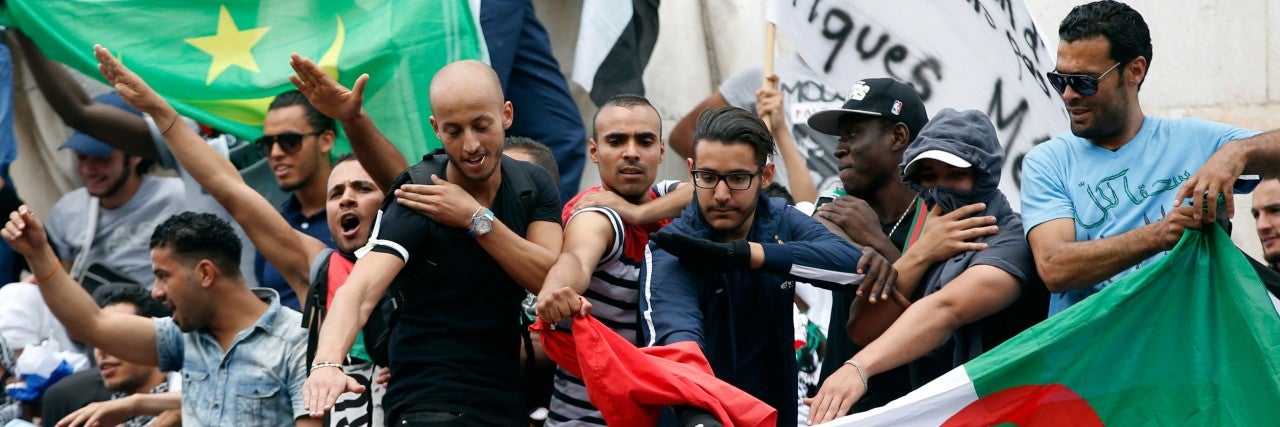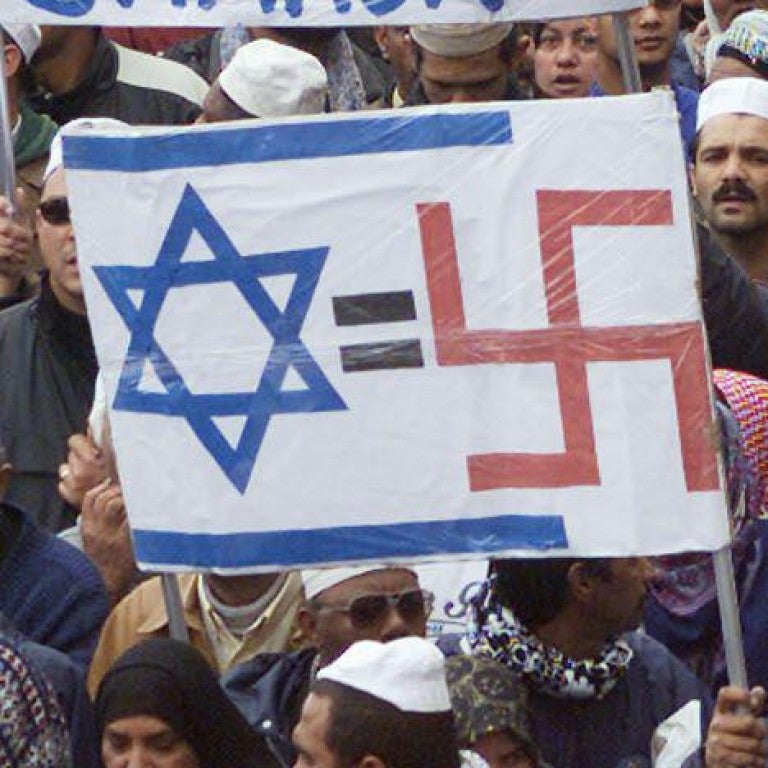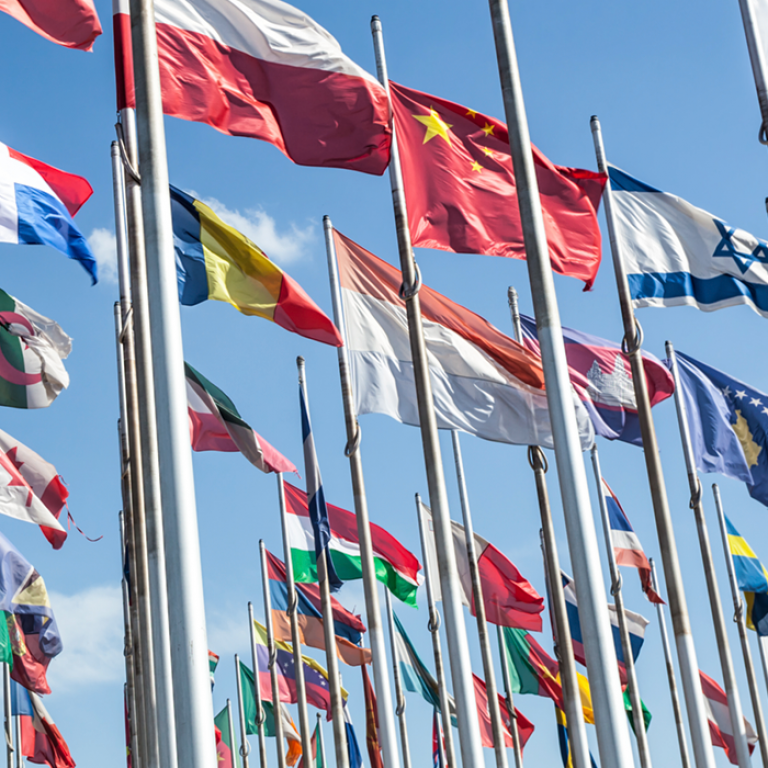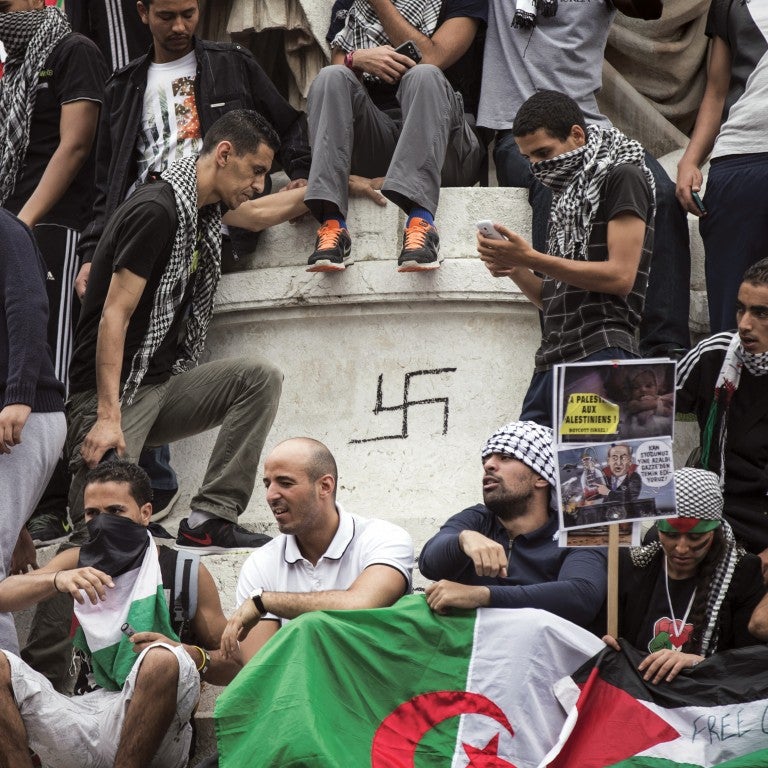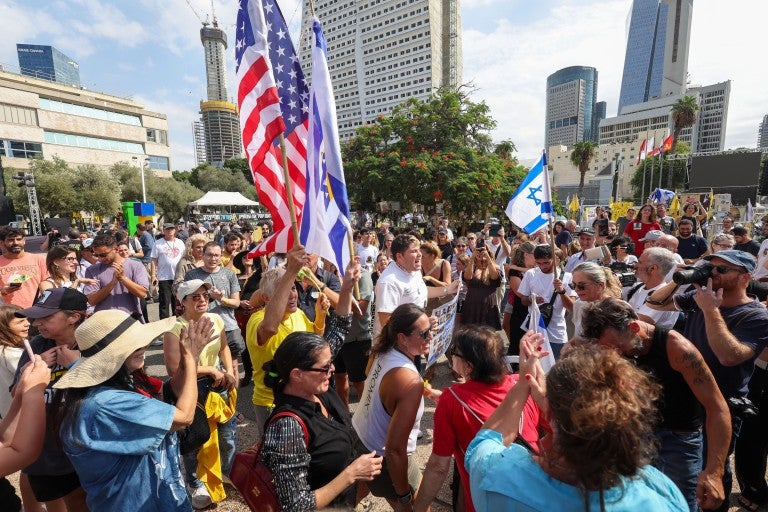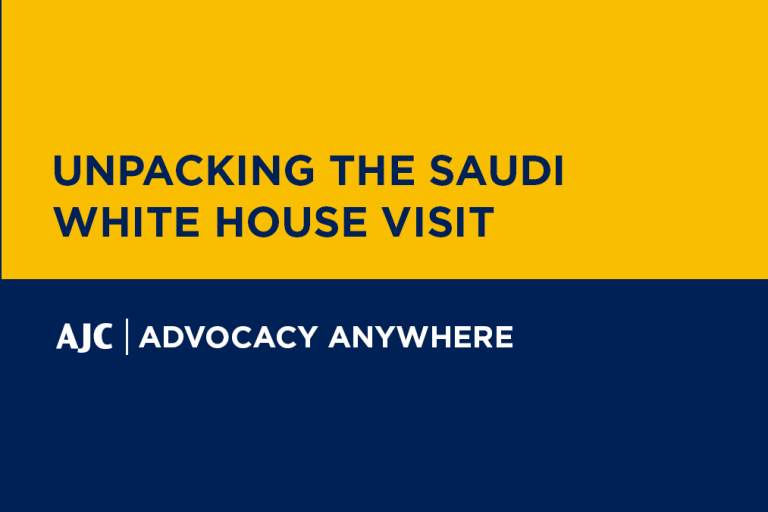September 20, 2021
By Marc Weitzmann
Written during the winter of 2002 by Democratic Representative Tom Lantos, “The Durban Debacle: An Insider View” is one of the most telling documents on what went wrong at the notorious UN World Conference Against Racism (WCAR) that took place in 2001.
Lantos, who was one of the key figures of the U.S. delegation at Durban, was born in Hungary to a Jewish family later deported by the Nazis. He managed to escape and join Raoul Wallenberg’s network of resistance. This background weighed on his later involvement in politics as a Democratic congressman from California, a seat he won in 1981. In Congress, he fought for abortion rights, gay rights, and against the death penalty, and famously co-founded the bi-partisan Congressional Human Rights Caucus 1983, which he headed for twenty years.
That he would get involved in the negotiations on a UN Conference dedicated to fighting racism was entirely coherent with such a journey. His account of what led to the wreckage in Durban is therefore all the more heartbreaking. Above all, it gives the sense of a terrible missed opportunity.
“As announced by The General Assembly’s Resolution 52/111”, wrote Lantos, the WCAR was “to broach the sensitive subject of slavery and its painful legacy in an effort to achieve historic reconciliation,” focused “on confronting and reversing a host of disturbing contemporary manifestations of racism against migrant workers in Western Europe and the Middle East.” And it would—last but not least—investigate “the proliferation of hate sites on the World Wide Web.” This was the conference’s main program, and the irony—that the conference was finally hijacked by the very hostile forces it was meant to fight—is hard to ignore.
In 1997, Bill Clinton’s America saw itself as a natural partner of the UN for a global summit on the themes mentioned above. Not only was the United States at the peak of its international influence, but, writes Lantos, “combating racism was a centerpiece of the President’s domestic agenda, manifested in his National Initiative on Race.”
As a sign of its future involvement in the initiative, the Clinton administration created an interagency task force that was to work with the UN on the future conference. That task force was led by then-Assistant Secretary of State for Human Rights Harold Koh and then-Assistant Attorney General for Civil Rights Bill Ann Lee. It’s worth noting that Lee was the highest-ranking Asian-American in the Department of Justice and a former NAACP activist. The task force “launched a national dialogue,” Lantos explained, “to begin laying the groundwork for the event.” The message, according to Lantos, could not have been clearer: “The U.S. could make a valuable contribution to the global dialogue on race by virtue of its national experience in struggling to overcome its past to create a successful multi-racial, multi-ethnic society.”
This, of course, was classic post-Cold War rhetoric. In that era, America’s soft power and the self-evident truths of the liberal democratic global village, boosted by a media revolution that promised the same reality to all, in many ways had become one and the same. In Prague, welcomed by former dissident and new President Vaclav Havel, the Rolling Stones had opened the decade. In Russia, amid the growing chaos, the promises of Perestroika made people believe that liberalism was putting down roots. In Cuba, the regime was vacillating. And there was hope that, despite repression, the winds of change could reach even Beijing. In 1997, images of the World Trade Center crumbling to the ground had not yet spread across the emerging internet, leaving in their wake a morass of conspiracy theories about what had actually happened. We still had a shared sense of reality.
Two symbolic events shaped the hopeful era. One was in the Middle East, where, under Clinton’s supervision, the Oslo peace process had been initiated and—in spite of the murder of Yitzhak Rabin—the establishment of a democratic, liberal, Palestinian state through economic integration was being promoted. The other was, of course, the demise of the apartheid regime of South Africa in April 1994, and its replacement by a Government of National Unity led by Nelson Mandela, the unquestionable hero of the times.
In December 1997, the UN decided to announce plans for a third World Conference Against Racism (the two previous ones, held in 1978 and 1983 in Geneva, had both focused on South Africa). It was time to reinvigorate the debate. The invocation of Racial Discrimination, Xenophobia, and Related Intolerance in the title, and the choice of Durban as the new place to hold the conference, were clear signs that the fight for human rights would help shape the new century.
Neglected or unseen at the time, however, were the various sub-cultures of frozen hatred, nurtured and manipulated by the USSR for decades, but finally heating up. In the Balkans, forces including former communists and Saudi-trained Islamists, had begun to clash as soon as 1991. Russia had been torn apart by the conflict with ethnic and religious minorities in Chechnya. The same year, in Algeria, a country backed by the Soviets since its independence, an Islamist guerilla force trained in Afghanistan and also financed by the Saudis, plunged the country into a civil war that would claim 200,000 lives before the end of the decade. In Afghanistan, the Taliban took over in 1996. As for the Middle East, the politics of separation (hafrada) first formulated in 1992 by Yitzhak Rabin in the context of peace negotiations, which implied the withdrawal of at least some Jewish settlements from Palestinian territories, was beginning to be seen by some activists as an equivalent of apartheid.
Finally, in September 2000, the Palestinian organizations (that had been supported by the Soviets since the founding of the PLO in 1964) launched the Second Intifada, which destroyed the remainders of the peace negotiations, and in the process spread an enormous wave of antisemitism all across the world—and perhaps most notably across France. Indeed, it was the anti-Israeli furor kicked off by the Second Intifada that fueled the Durban rage.
In February 2001, the Asian Preparatory meeting for the WCAR took place in Tehran, a dubious venue booked two years earlier in the name of multilateralism by the UN General Assembly’s Third Committee in charge of social and humanitarian issues. Reportedly, Iran was the only Asian country that even offered to host the regional event. In a departure from UN practice, the Iranian authorities in charge of the meeting refused to issue visas to Jewish, Kurdish, and Bahai NGOs, as well as Australia, New Zealand, and Israel which sought to send official diplomatic delegations. Three months later, in May, the final prep meetings held in Geneva saw delegates from Egypt, Iran, Iraq, Pakistan, Syria, plus observers from the PLO, insist on the inclusion of anti-Israel texts based on the Tehran Declaration’s language. They also insisted on adding plural to the “Holocaust” each time it was mentioned. Protests from the UN High Commissioner for Human Rights Mary Robinson were ineffective at best. It was a rhetorical war of attrition.
That same spring, writes Lantos, “the initial moves” of the newly elected President George W. Bush “suggested a marked disdain for multilateral initiatives and an unwillingness to work with the UN.” This, in turn, triggered a certain level of distrust among America’s top allies in Europe, which afforded them an excuse to indulge their own anti-Israeli biases. By the summer, the stage was set for the horrendous display of hate that Joëlle Fiss describes in Durban Diaries and a in a more recent AJC podcast interview.
The WCAR that took place in Durban was divided into two distinct conferences—the NGO Forum held from August 28 to September 1, and the intergovernmental conference from August 31 to September 8. One of the most underexamined aspects of Durban were the consequences it had on political rhetoric. The most extreme speeches and brutal displays of antisemitism took place at the NGO Forum during that time. As a result, the horrific rhetoric during the NGO conference, and the atmosphere of physical threats that Jewish delegates like Fiss experienced, were not investigated, while the final statement of the intergovernmental Durban conference, cleansed of its worst elements but still problematic, was offered to the world as a global statement against racism. Jews and other attendees of the forum who raised their voices protesting against WCAR were portrayed as self-centered—or even worse, as racists themselves. This created a precedent.
As Pierre-André Taguieff explains, the draft resolution written in February 2009 for the second Durban conference referred to Israel as a "racist and occupying" country and included no less than five paragraphs on Israel, accusing it of pursuing apartheid-like policies toward the Palestinians. Western countries opposed it, but when the Durban Review Conference was held in Geneva, from April 20 to 24,2009, Libya occupied the presidency of the conference, Pakistan sat as the spokesperson for the Organization of Islamic Cooperation (OIC), and Iran held the vice-presidency, with Mahmoud Ahmadinejad, the future President of the Islamic Republic of Iran, announcing that the aim of the Durban Review Conference would be to "clarify the achievements" of the 2001 Durban Declaration and Program of Action. One of the key points discussed at the Durban Review Conference was the new notion of “defamation of religions” including "negative stereotyping of religions,” which was usually focused on "Islamophobia," while Zionism was referred to as a form of racism.
Yet again, thanks to the push by Western delegates, the conference’s final statement was cleaned up and ultimately welcomed by then-French Foreign Minister Bernard Kouchner as a victory for human rights defenders against “all those who tried to instrumentalize the conference.” But was it so? Or did the final resolution serve to mask what was really said in Durban? Again, Jewish protestors looked like they were neurotic and even perhaps paranoid. On the one hand, rhetorical violence was out in the open, while the final written statement kept a relative appearance of respectable political language.
The rapidly growing disconnect between speech and the rising violence that it was supposed to tame has been observed on various levels in the global public debate since then. Today, on the streets, on social media and on TV, the quasi-denial of their own antisemitism by antisemites themselves has become the new normal. And it is terrifyingly effective. A far-left or far-right Islamist activist will appear to be all the more convincing because he denies what he is saying, while accusing those who are criticizing him of ill intent or paranoia. At the same time, anyone actually listening to him understands exactly what is going on—especially those in agreement.
But isn’t there another, perhaps deeper consequence of what happened to language during the last twenty years? International relations during the second half of the twentieth century were largely shaped by the framework of the Cold War, and by institutions such as the UN. The Universal Declaration of Human Rights, in particular, was adopted by 48 out of the 58 UN member states in 1948. If the Universal Declaration of Human Rights was the foundation for the fight for human rights for people such as Tom Lantos, it was also, in a certain way, the backdrop for the Western sense of what universalism could mean in the second half of the 20th century. Needless to say there always was a distinction between the principles laid out in the Universal Declaration of Human Rights – or, for that matter, the UN mission—and the international community’s diplomatic and military realities. Nevertheless, it stood there as a reminder of what the West was about and from which notions such as “nation building” could arguably borrow ideals.
In the Middle East, what had started in 1948 as a regional dispute over some land had morphed, during the second half of the Cold War, into a battle over the destiny of the “wretched of the world.” War by proxy, terrorism, and coup d’état, were how the two superpowers had exorcized the specter of a nuclear holocaust. The U.S. had Latin America for a playground, and the USSR the Middle East. (Vietnam was shared.) Created by the Arab League but baptized by the USSR in 1964, the PLO had quickly joined Cuba and the Algerian FLN as one of the three pillars in the global anti-imperialist fight. On the other hand, the guilt associated with the Holocaust cast such a long shadow on whatever fate was in store for Israel that no Western politician felt he could bypass it. The French and the Americans especially made a moral point of solving the conflict. Hence, during the 1990s, among the many projects of global democratization across the world, the Oslo process soon acquired a special symbolic importance. There was a sense that solving that conflict could somehow solve all conflicts. Peace there, in Jerusalem, would close the twentieth century and its nightmares on a mystical note. The downside of that logic, of course, was that the failure of Oslo would mark the failure of global power.
And, sure enough, in the aftermath of the Second Intifada, Durban offered, for the first time, a stage for the global anti-Western hate that was dormant during the 1990s to express itself in the open. In that sense, Durban I appears as the missing link between the Second Intifada and 9/11‚ as if these three episodes were in fact part of the same event that founded our century by eroding the faith in a common reality and in common values, while at the same time blurring the borders between war and peace.
It has been noted by some that the timing of President Biden’s withdrawal from Afghanistan was symbolic, that he wanted it to coincide with the 20th anniversary of 9/11, so as to emphasize the end of an era that had started with the attacks. If so, he, or his communication advisers, may have been right, but not necessarily the way they think they were. For what died twenty years ago, somewhere between the end of the peace process, the Durban Conference, and the terror attacks on New York and Washington, D.C., may well have been the feeling, expressed so poignantly by Tom Lantos, that we share a common world where “global dialogue... could help create a successful multi-racial, multi-ethnic, and free society that would respect the rights of all, regardless of their origin, religion, sex or gender.” The obituary notice just took twenty years to reach us.
Meanwhile, however, the hate narrative framed at Durban has spread, and it is now alive and well—including in the U.S. itself. The decision of some twenty countries (at the moment this is written) refusing to participate in the Durban anniversary conference is an important and welcome sign in the recognition that all forms of racism, including antisemitism, need to be fought and that there are universal values to be defended. Nevertheless, the very fact that these countries are all Western should beg the question. Is this an affirmative step – the first toward a welcome renewal of the true meaning of universal human rights? Or, to the contrary, is this the defensive retreat of an aging West besieged by the rising chaos? In any case, these gestures might not be sufficient to regain the post-war momentum that allowed the Universal Declaration of Human Rights to come into being. The 21st century will certainly demand more, much more.
Marc Weitzmann is a French author of 12 books and a regular contributor to Tablet Magazine, Le Point and Le Monde. His book "Hate" about the rise of antisemitism in France since the early aughts was released in 2019 in the U.S. by Houghton Mifflin.
The Wall Street Journal described "Hate" as "an excellent and chilling report-cum-memoir about one of the most unsettling phenomena in contemporary Europe." The book is a New York Time Book Review Editor's choice and a laureate of the American Library prize in Paris.
